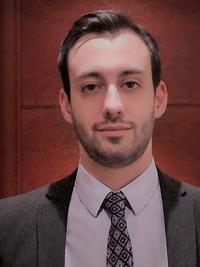Student talks: Sarah-Jean Meyer (Oxford) and Francesco Pedullà (Imperial) and Speaker talk: Professor Louis-Pierre Arguin (Oxford)
13:00 Sarah-Jean Meyer, University of Oxford CDT student
The FBSDE approach to sine-Gordon up to 6π.
Abstract: The rigorous study of euclidean quantum field theories (EQFT) is a classical topic which has driven a lot of mathematical development. Mathematically, EQFT's can be understood as random fields and a recent approach to this problem involves trying to adapt tools and ideas of stochastic analysis to this setting.
In this talk, I will present a stochastic analysis for a particular EQFT, the sine-Gordon Euclidean quantum field (cos(β φ))_2 on the full space up to the second threshold, i.e. for β^2<6*π. Our construction relies on a forward-backward stochastic differential equation (FBSDE) for a decomposition (X_t)_(t⩾0) of the interacting Euclidean field X_∞ along a scale parameter t⩾0 using an approximate version of the renormalisation flow equation. The FBSDE produces a scale-by-scale coupling of the interacting field with the Gaussian free field without cut-offs and describes the optimiser of a stochastic control problem for the Euclidean QFT. I will explain the general set-up for the FBSDE approach and mention some applications of the FBSDE in the case of the sine-Gordon model to illustrate that it can be used effectively to obtain results about large deviations, integrability, decay of correlations for local observables, singularity with respect to the free field, Osterwalder–Schrader axioms and other properties. This is joint work with Massimiliano Gubinelli.

13:30 Francesco Pedullà, Imperial College London CDT student
An approximation theory for singular SPDEs with regularity structures.
Abstract: In this talk, I will discuss the analytic aspects of an extension of the theory of regularity structures which accounts for a wider class of regularisations of the SPDE under consideration.
The theory of regularity structures originally developed by Hairer provides a solution theory for a wide range of classically ill-posed SPDEs by prescribing a way of renormalising a mollified version of the equation. The key ingredient of this approach is a generalised Taylor expansion of the solution dictated by the equation that is stable under relaxation of the mollification.
Our extension addresses and answers positively the question of whether the same solution theory can be recovered starting from other natural methods of regularising the original equation, such as spatial discretisations and viscous approximations. Our approach deals with all these approximations at once by assuming suitable small-scale bounds and re-running the whole programme in this general setting.
The resulting theory is expected to find applications in demonstrating invariance of measures, obtaining scaling limits and establishing weak universality results for singular SPDEs.
14:15 Professor Louis-Pierre Arguin, University of Oxford
The Ubiquity of Branching Brownian Motion
The extreme value statistics of branching Brownian motion are now well understood, starting from the seminal of Bramson in the early 1980's. In the last ten years, the heuristic behind these has been applied to extreme value questions in various fields of mathematics. In this talk, I will review the fundamental ideas behind Bramson's work and their applications to problems in random matrix theory and number theory.